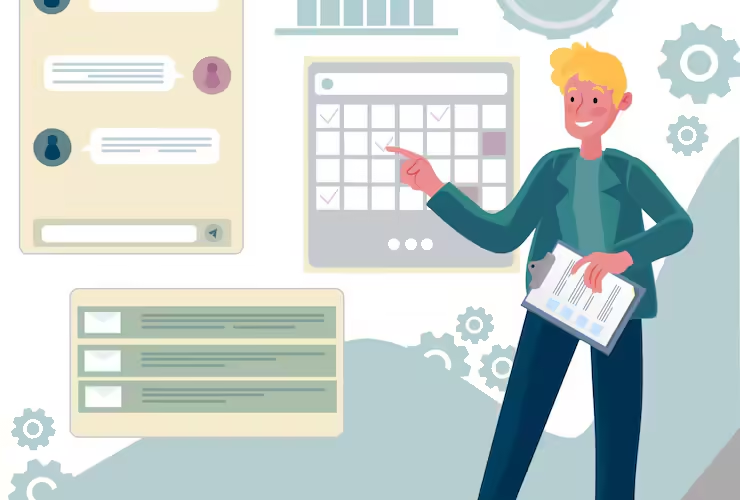The Role of Financial and Non-Financial Incentives in Increasing Employee Satisfaction in Small and Medium Enterprises
introduction
Employee satisfaction is a crucial factor in the success of any business, especially small and medium enterprises (SMEs). With limited resources, SMEs must strategically leverage both financial and non-financial incentives to foster a motivated and satisfied workforce. This article explores the importance of these incentives and how they can be effectively implemented to enhance employee satisfaction.
Understanding Financial Incentives
Types of Financial Incentives
- Bonuses: Periodic extra payments given for meeting certain performance targets.
- Salary Increases: Regular or merit-based increases in base salary.
- Profit Sharing: Distribution of a portion of the company’s profits among employees.
- Commission: Payments based on the amount of sales generated by an employee.
- Stock Options: Offering employees the option to purchase company stock at a reduced price.
Benefits of Financial Incentives
Financial incentives are directly linked to an employee’s financial well-being. They can:
- Increase Motivation: Directly reward performance, encouraging employees to strive for better results.
- Attract Talent: Competitive salaries and bonuses can attract skilled professionals.
- Enhance Retention: Financial rewards can reduce turnover by making employees feel valued and fairly compensated.
Understanding Non-Financial Incentives
Types of Non-Financial Incentives
- Recognition Programs: Public acknowledgment of an employee’s efforts and achievements.
- Career Development Opportunities: Offering training, workshops, and career advancement paths.
- Flexible Working Hours: Allowing employees to have flexible schedules.
- Work-Life Balance Initiatives: Encouraging a balance between work responsibilities and personal life.
- Positive Work Environment: Creating a supportive, inclusive, and motivating workplace culture.
Benefits of Non-Financial Incentives
Non-financial incentives address emotional and psychological needs. They can:
- Increase Job Satisfaction: Recognition and career growth opportunities can make employees feel valued and satisfied.
- Foster Loyalty: A positive work environment and work-life balance can increase employee loyalty.
- Promote Team Spirit: Non-financial incentives can encourage collaboration and teamwork.
Implementing Incentive Programs in SMEs
Steps to Effective Implementation
- Understand Employee Needs: Conduct surveys or hold meetings to understand what motivates your employees.
- Set Clear Objectives: Define what you aim to achieve with your incentive programs, such as increased productivity or reduced turnover.
- Design Balanced Programs: Combine both financial and non-financial incentives to cater to diverse employee needs.
- Communicate Clearly: Ensure that employees understand how they can achieve and benefit from the incentive programs.
- Monitor and Adjust: Regularly review the effectiveness of the programs and make adjustments based on feedback and performance metrics.
Challenges and Solutions
- Limited Budgets: SMEs often have limited financial resources. Solution: Focus on cost-effective non-financial incentives and creative financial rewards.
- Diverse Workforce Needs: Different employees are motivated by different things. Solution: Offer a variety of incentives to cater to diverse preferences.
- Sustainability: Maintaining long-term incentive programs can be challenging. Solution: Regularly assess and update programs to keep them relevant and effective.

FAQs
Why are financial incentives important for SMEs?
Financial incentives directly reward employees for their performance, which can increase motivation, attract talent, and enhance employee retention, all of which are crucial for the success of SMEs.
What are some examples of non-financial incentives?
Non-financial incentives include recognition programs, career development opportunities, flexible working hours, work-life balance initiatives, and creating a positive work environment.
How can SMEs implement effective incentive programs?
SMEs can implement effective incentive programs by understanding employee needs, setting clear objectives, designing balanced programs, communicating clearly, and regularly monitoring and adjusting the programs.
What challenges do SMEs face when implementing incentive programs?
SMEs may face challenges such as limited budgets, diverse workforce needs, and maintaining the sustainability of the programs. These can be addressed by focusing on cost-effective incentives, offering a variety of incentives, and regularly updating the programs.
How do non-financial incentives contribute to employee satisfaction?
Non-financial incentives address emotional and psychological needs, increase job satisfaction, foster loyalty, and promote team spirit, all of which contribute significantly to overall employee satisfaction.
Conclusion
Both financial and non-financial incentives play a vital role in increasing employee satisfaction in SMEs. By understanding and strategically implementing these incentives, SMEs can create a motivated, loyal, and productive workforce, ultimately driving business success.




